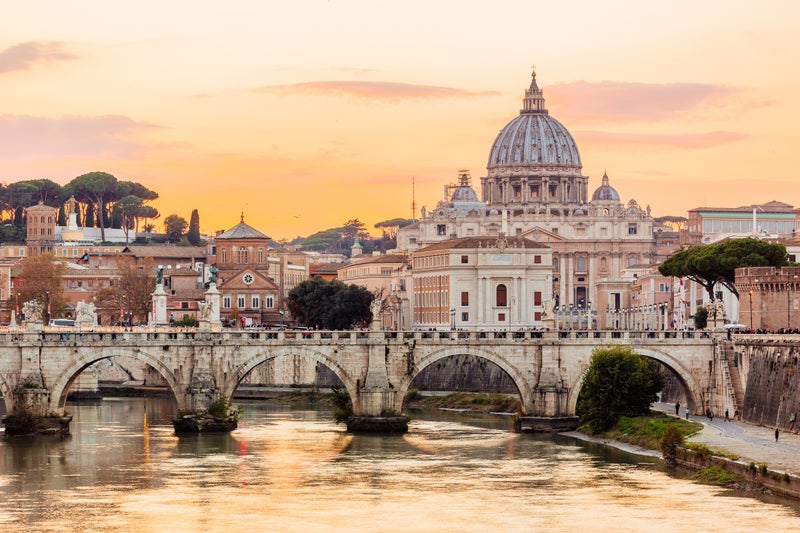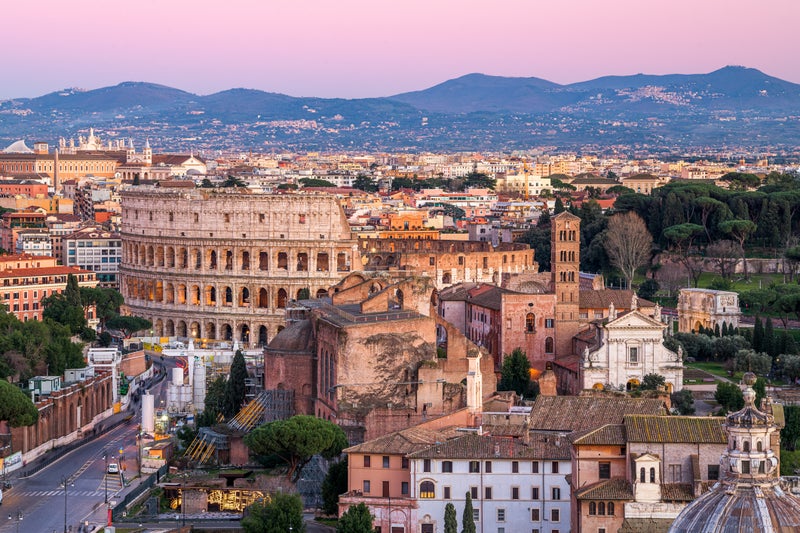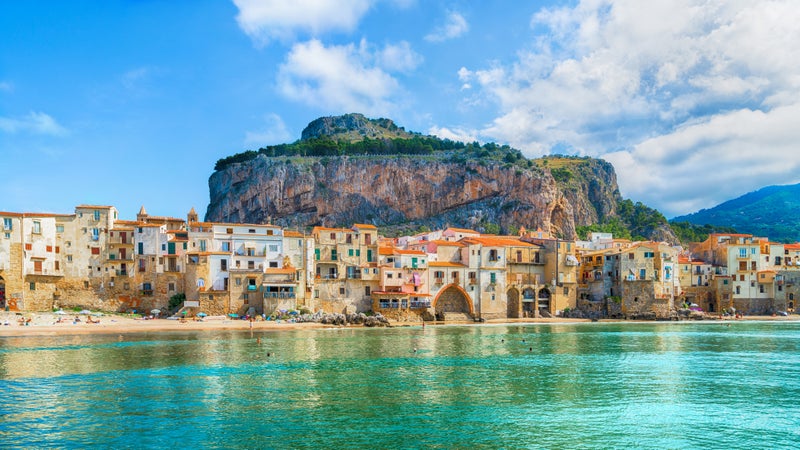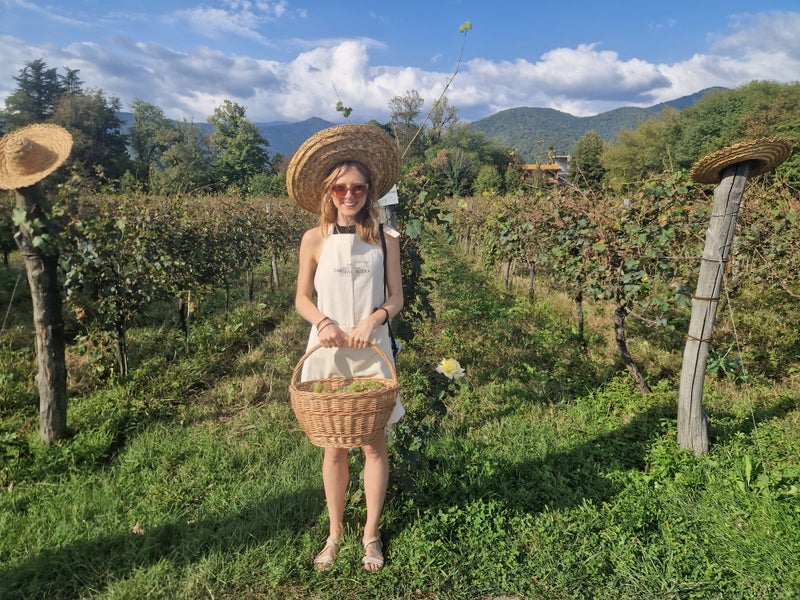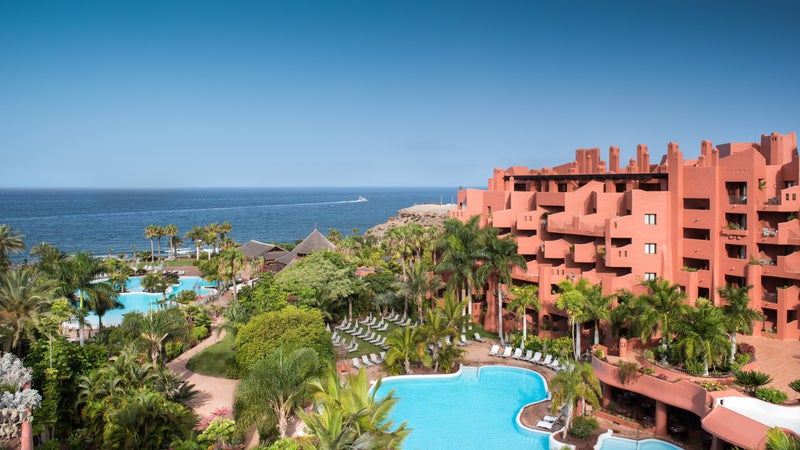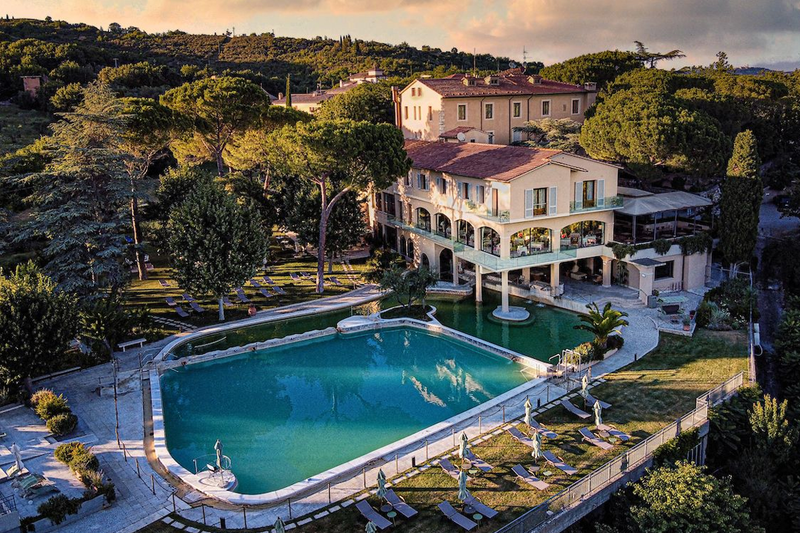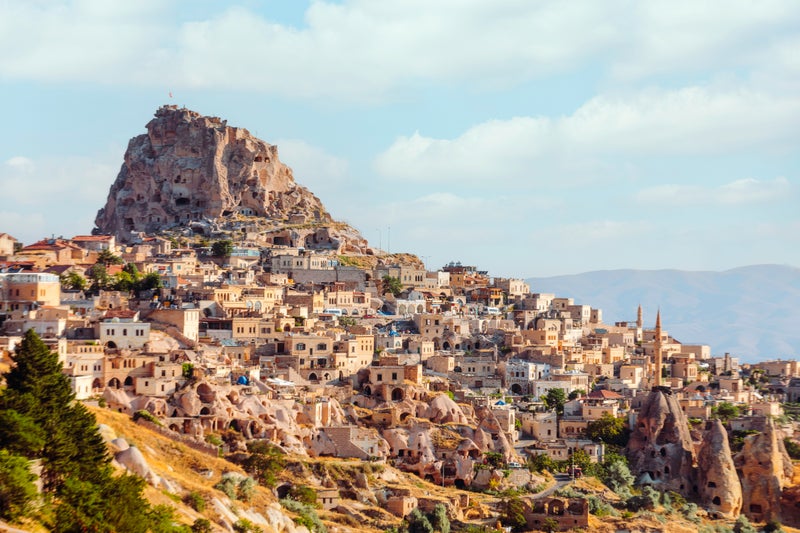Germany is experiencing a political shift that is alarming many citizens. The photographer Fabian Ritter has spent years documenting the rise of the far-right AfD party and more extreme groups. Recent events illustrate the growing tension. In the run-up to Sunday’s election in Germany the political climate has become more heated. There have been attacks on politicians and campaign workers, and election posters have been destroyed. Many felt unsettled or even threatened after Friedrich Merz, the leader of the centre-right CDU, proposed a bill to tighten immigration control that had the backing of the far-right Alternative für Deutschland.
![[Björn Höcke speaks on a stage in the cathedral square with spires in the background; he is small in the corner of the image but seen in closeup on a huge screen to the right of the stage. ]](https://i.guim.co.uk/img/media/102448628acb81c660db028b4be2ad3f9f175f16/0_0_6935_5201/master/6935.jpg?width=445&dpr=1&s=none&crop=none)
Björn Höcke, the AfD’s leader in Thuringia and head of its nationalist wing, speaks at the Domplatz in Erfurt during the party’s final campaign event before state elections, 31 August 2024. The AfD, classified as a suspected rightwing extremist party by domestic intelligence, celebrated the cracking of the “firewall” against working with the far-right in the Bundestag. Mass demonstrations erupted in response and the Holocaust survivor Albrecht Weinberg returned his federal order of merit in protest.
![[YouTuber and influencer Ketzer der Neuzeit interviews Alice Weidel: he holds a microphone as they stand on a darkened balcony which has a banner on it reading Team Alice.]](https://i.guim.co.uk/img/media/005c18c4728332f1d9d2c3d7276c4cd7ea1626a2/0_0_5044_3783/master/5044.jpg?width=445&dpr=1&s=none&crop=none)
The new-right influencer Ketzer der Neuzeit, real name Leonard Jäger, interviews the AfD co-leader Alice Weidel after the conclusion of the federal convention in Riesa, Saxony, 12 January 2025. Jäger’s YouTube channel often features conspiracy theory content and is aimed primarily at a younger audience.
![[Katrin Nolte, a young blonde woman, kneels on the wooden floor of a studio with a phone on a tripod in front of her; behind her is a screen with the AfD logo and the words Herzlich willkommen]](https://i.guim.co.uk/img/media/48592459043d3af63da88ec8a838e5b31db93cd6/0_0_6373_4780/master/6373.jpg?width=445&dpr=1&s=none&crop=none)
The role of disinformation and social media. The AfD’s rise has been fuelled by disinformation, which accelerated during the 2020 Covid-19 pandemic when the Querdenken movement was founded. During this phase, parts of the AfD mixed more and more with conspiracy theorists and far-right extremists. At the same time, social media apps, such as TikTok, Telegram and Twitter (now X), became increasingly widespread in Germany, allowing content and narratives to spread mostly unfiltered. No other German party has been as successful as the AfD on these social media platforms, especially on TikTok.
![[A state parliament room with a classical-style statue of a woman in an alcove and candelabra lighting; a German flag has been attached to the light fitting and there is a bottle of wine and some election merchandise on a table; the bottle has a picture of an AfD candidate on its label and the words Stop Grun! ]](https://i.guim.co.uk/img/media/820d13fe91f637f324ec704b77281c21c52c7689/0_0_5365_4024/master/5365.jpg?width=445&dpr=1&s=none&crop=none)
Katrin Nolte, an author for rightwing media such as the Deutschland-Kurier online outlet, films content in Potsdam shortly after the announcement of the results of the Brandenburg state elections. 22 September 2024. There is an increasing attempt to push conspiracy theories and historical revisionism into the mainstream. In January, the AfD co-leader Alice Weidel falsely claimed in an online discussion with Elon Musk that “Hitler was a communist”. The AfD has since invited Musk to a campaign event, despite him making a gesture that was widely interpreted in Germany as a Hitler salute. In response, the artists’ group Zentrum für Politische Schönheit (ZPS) projected an image of Musk’s gesture on to a Tesla factory in Brandenburg. Ironically, ZPS, which has repeatedly campaigned for the prohibition of the AfD, is now under police investigation for displaying unconstitutional symbols – the Hitler salute is forbidden in Germany.
![[The memorial stone for NSU victim Habil Kılıç is partially overgrown by grass]](https://i.guim.co.uk/img/media/31773f28b284ad3cee19f7a13c2529e631a74219/0_0_3200_2400/master/3200.jpg?width=445&dpr=1&s=none&crop=none)
The AfD decorates its election party room in the Hessian state parliament, Wiesbaden, 8 October 2023. The AfD often plays with ambiguities or statements that are close to criminal offences. The 2025 election campaign slogan, Alice für Deutschland (Alice for Germany), is strongly reminiscent of the slogan of the Sturmabteilung (SA, or Storm Division, the Nazi party’s paramilitary wing) Alles für Deutschland (Everything for Germany). These are ambiguous signs, but the target rightwing extremist audiences understand them perfectly while more bourgeois voters often play them down.
![[Armed police officers guard a courtroom.]](https://i.guim.co.uk/img/media/e412df0b53c8ce8dedde421dd0182f052be837ab/0_0_4432_3324/master/4432.jpg?width=445&dpr=1&s=none&crop=none)
The memorial stone for Habil Kılıç, a victim of the NSU terrorist cell that operated as an underground organisation, is partially overgrown by grass. In the city park in Zwickau, Saxony, the 10 victims of the far-right NSU are commemorated in this way. Victims’ associations have criticised the lack of involvement of the bereaved and families of the murder victims in the design of the memorial site. Zwickau, Saxony, 28 May 2024.
![[Men in black carrying black flags march; one in front has a shaven head and another facial and neck tattoos including a number 18, indicating the AH initials of Adolf Hitler, on his cheek.]](https://i.guim.co.uk/img/media/39dad45221d1f15644c4479ae52f0869a73cb6fd/0_0_5365_4024/master/5365.jpg?width=445&dpr=1&s=none&crop=none)
Escalating violence and historical parallels. Support for the AfD is rising rapidly, particularly in rural areas struggling economically and with poor infrastructure, and where politicians such as Björn Höcke, the AfD’s leader in Thuringia, and Maximilian Krah, an MEP and the party’s top candidate in the 2024 European parliament elections, are regarded as role models for many young men despite numerous scandals. Both specifically appeal to their young audiences at campaign events and on social media. Höcke, who is also considered a powerful leader of the nationalist wing within the AfD, was found guilty by a court in 2024 for using a banned Nazi slogan.
![[Two children, one seen only from shoulders-down and the other with only half her face in view, show off the painted patterns on their arms: these include stars and blue hearts with the letters AFD in the centre]](https://i.guim.co.uk/img/media/5532fd54710e4b6f3ebd1210b407d3ec9095df5f/0_0_7339_5504/master/7339.jpg?width=445&dpr=1&s=none&crop=none)
Germany has had a long history of rightwing violence since the end of the second world war, and deadly attacks have continued. The fifth anniversary of the racist Hanau 2020 attack, which claimed nine young lives, was marked just days before federal elections in which the AfD is expected to become the second-strongest political force. Survivors, friends and relatives of the murdered held a banner at a protest stating: “The AfD participated in the shooting.”.
![[Men holding flares stand by as a group with banners marches down a street; in front of the marchers are two men with placards round their necks who are about to step on an EU flag which is laid on the ground.]](https://i.guim.co.uk/img/media/71e5375141fa138c77eda98d0aa770157c3e730a/0_0_5365_4024/master/5365.jpg?width=445&dpr=1&s=none&crop=none)


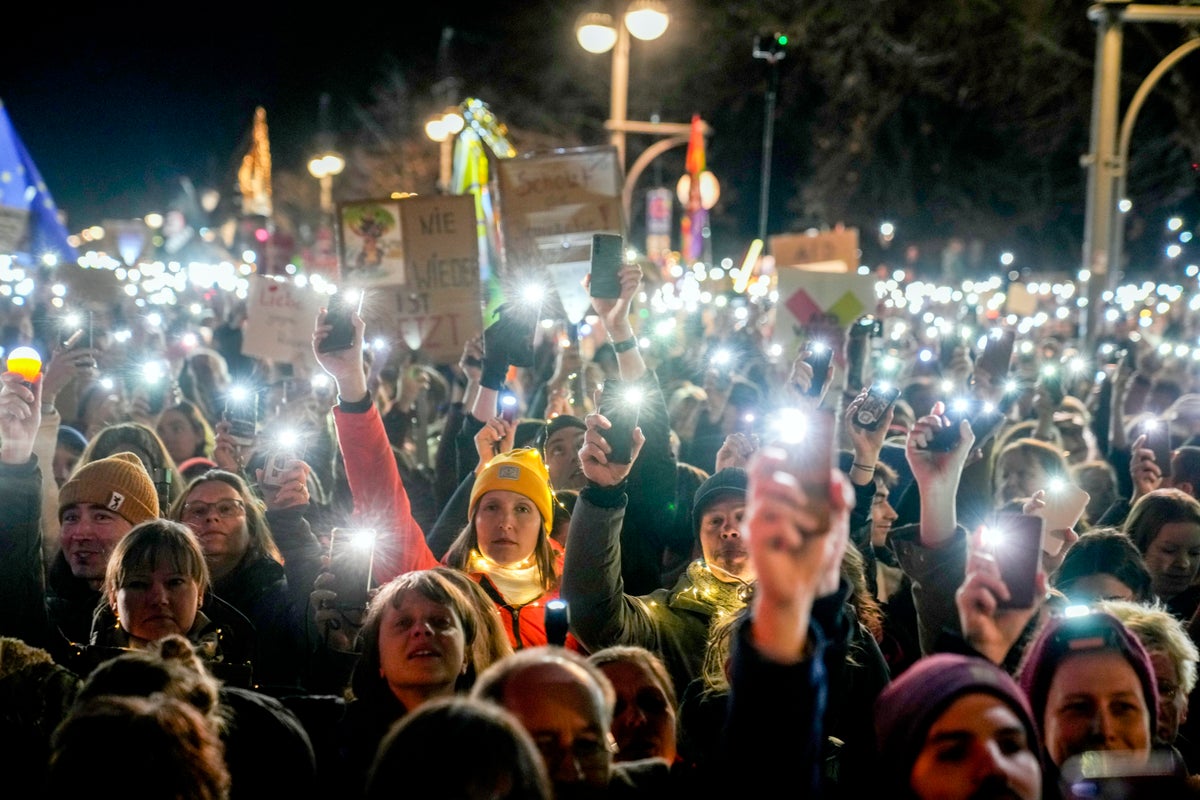


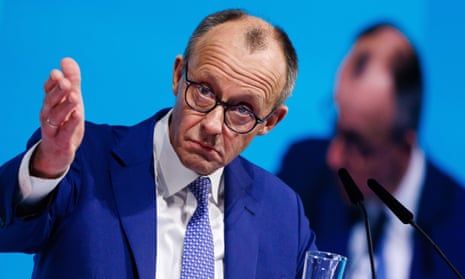







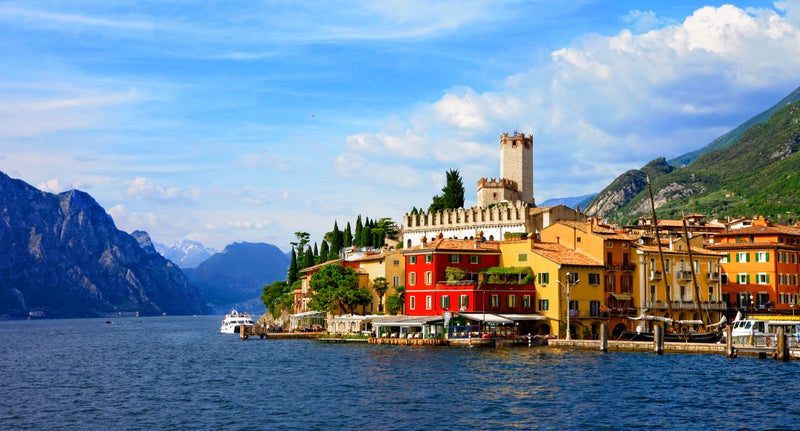
.jpg?auto=webp&width=800)

